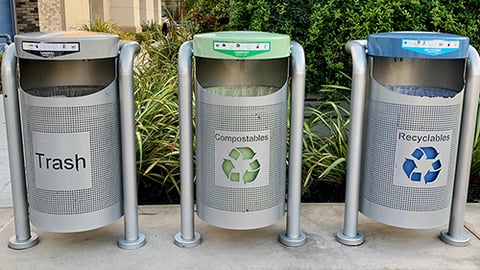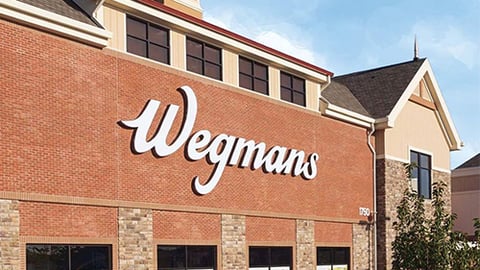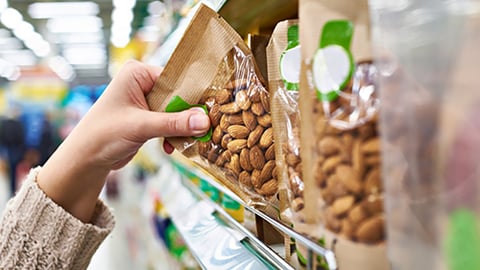Rethink the Sustainability of Packaging
If f you haven’t yet seen a recyclable toothpaste tube, boxed water, or refillable containers for orange juice, brace yourself: Supermarket packaging is about to get really interesting.
Key Takeaways
- Large and small grocers alike have committed to eliminating single-use shopping bags from their stores, and now they’re in the process of phasing out other single-use plastics from their supply chains.
- Unfortunately, grocers’ and other companies’ ability to make use of some sustainable packaging materials is hampered by shortages or high prices.
- To get started with sustainable packaging, retailers can make use of the resources offered by the Sustainable Packaging Coalition.
Thanks to a growing demand for more earth-friendly packaging from concerned consumers, activists and regulators, manufacturers and retailers are on the verge of a packaging renaissance in which new recyclable and compostable containers will begin to permeate the market.
In recent years, one of the country's largest grocers, Kroger, has committed to eliminating single-use shopping bags from its stores, and other retailers are in the process of phasing out other single-use plastics from their supply chains, ranging from plastic straws to deli containers. Smaller regional players such as Giant Eagle have recently announced their intentions to do the same. At the same time, a growing number of companies are looking at how they can reduce packaging in general or use more post-consumer-recycled material in their designs.
Behind the positive headlines of these socially responsible corporate moves, however, there are some major supply chain considerations.
First, companies must explore which materials are available and how much they cost, as well as how their availability may fluctuate in the future. Second, once they decide which materials to use, they should consider educating consumers about the new packaging, including whether it’s recyclable or compostable. This isn’t an easy task in the United States, where confusion about recycling is rampant, since there’s no universal system in place.
Living in the Material World
More Information
At least one grocery operator that’s further along in its packaging redo, cooperative PCC Community Markets, in the greater Seattle market, is facing some potential challenges in meeting the sourcing demands for some of its new packaging.
PCC, which operates its business through a triple bottom-line sustainability lens, eliminated single-use plastic grocery bags back in 2007, five years before Seattle’s plastic bag ban. It also introduced compostable trays in its meat and seafood departments in 2010 and replaced plastic straws and utensils with compostable alternatives in 2015. Then, in 2018, the company unveiled a broad set of five-year sustainability goals, including removing petroleum-based plastics from its delis by 2022. Unfortunately, there’s now a shortage of the material it selected for its new biodegradable, compostable deli containers — bioplastic PLA (polylactic acid).
PCC has already begun rolling out the containers in its 13 stores, which has helped it eliminate more than 8 million pieces of petroleum-based plastic. Brenna Davis, VP of social and environmental responsibility for the cooperative, says that her company will be monitoring the shortage of PLA in the coming year. She notes that the deli containers are durable, functional and attractive, and have been well received by customers. PCC worked with its distributor, St. Louis-based Bunzl, in developing the packaging.
In another example of supply chain considerations, she notes that some composters are starting to ban PFAs, a group of man-made chemicals used in food packaging that has been linked to adverse human health effects, so PCC is scanning all of its new packaging to make sure that it’s in compliance.
Davis advises retailers that are just getting into sustainable packaging programs to consider their supply chains during the planning process, and also to study the cost of materials and how that will ultimately impact product pricing.
“At PCC, we’ve absorbed some of the costs and have passed on some of the costs to our consumers,” she notes.
Another packaging material facing some market uncertainties is post-consumer recycled content, according to Meghan Stasz, VP of packaging and sustainability for the Arlington, Va.-based Consumer Brands Association (formerly the Grocery Manufacturers Association).
“We’ve seen a number of major CPG companies making pledges to dramatically increase the amount of recycled content in their packaging, but right now, the supply is pretty unreliable. It’s either simply not there, or it’s more expensive,” she says. “So that is definitely something that we’re looking at, thinking about how we can work with the right stakeholders to really develop those end markets so that we can get the reliable, cost-effective supply of recycled content back into packaging.”
Getting on Board With Sustainable Packaging
One resource for retailers to learn more about sustainable packaging materials is the Sustainable Packaging Coalition, based in Charlottesville, Va. The membership-based collaborative offers a program called How2Recycle, which many retailers, including Walmart and Target, have been using for their private label programs.
“When a retailer applies for a label, How2Recycle provides feedback on the packaging recyclability and suggestions for improvement, if they are needed,” explains Nina Goodrich, director of the Sustainable Packaging Coalition. “So we can help the retailer influence their package design. The label also helps consumers know what parts of a package are recyclable and what parts are not.”
According to Goodrich, the program has helped retailers improve their packaging in multiple areas. “For example, package labels are an area that can interfere with recycling,” she explains.
"Many shrink sleeves interfere with the ability for a recycling facility to identify the materials under the sleeve. Switching to a sleeve that has received recognition from the Association of Plastic Recyclers (APR) increases the recycling facilities’ ability to capture material and improves sustainability.”
Goodrich encourages retailers to attend the coalition’s upcoming events and to check out its online education program, “The Essentials of Sustainable Packaging,” which contains a wide range of modules to help companies get started.
Once a company decides that sustainable packaging is important, Goodrich says, it must allocate appropriate resources so that its goals can come to life: “In other words, investment and commitment are required.”








